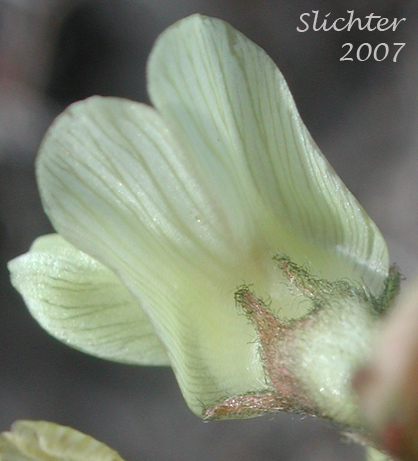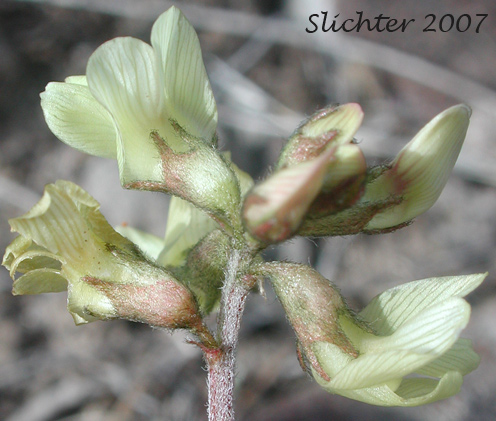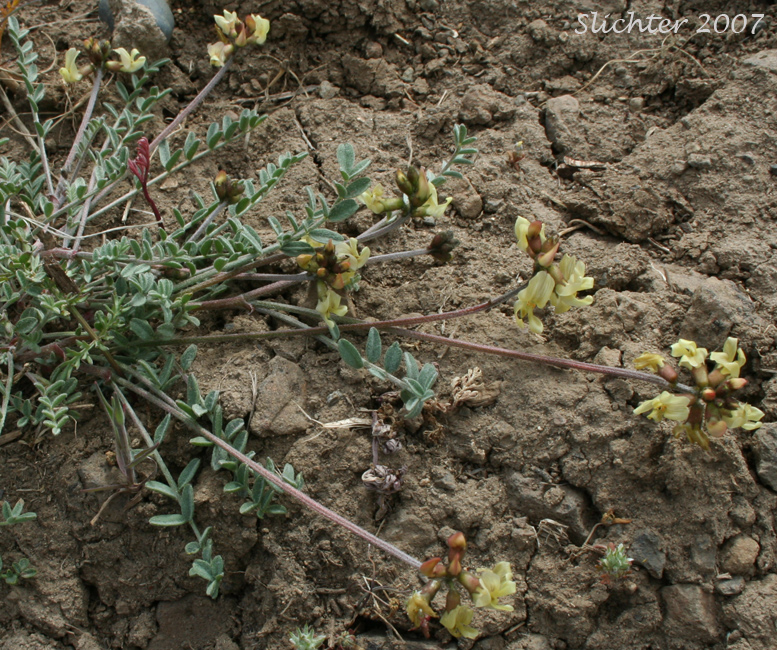
Astragalus misellus var. pauper


The photo at right shows a close-up of the banner of pauper milk-vetch as seen at the Yakima - Kittitas County border in central Washington.................April 24, 2007.
Also known as scabland milk-vetch, pauper milk-vetch is a perennial milk-vetch with a cluster of several prostrate to erect stems from 10-25 cm long. The leaves and stems are both covered with appressed hairs. The compound-pinnate leaves are 5-8 cm long and have 11 to 21 leaflets with linear-lanceolate to narrowly oblong leaflets, 5-14 mm long and 1-2.5 mm wide. The leaflets are glabrous above to soft-hairy with appressed hairs on both surfaces. (See the photo at right.)
The stout flower stems are longer than the leaves and are topped with a loose raceme of 5-25 flowers. The flowers are whitish-yellow. The flowers are from 6 to 16 mm long. The bell-shaped calyx is is 3-4 mm long with triangular and awl-shaped teeth about equally as long. The calyx is also covered with soft, crisp, white and brown hairs. The corolla is 5-7 mm long and is yellowish and often tinged with purple while the erect banner often contains purplish veins (See photos.). The wings are narrow with rounded tips and are up to 3 mm longer than the keel.
The pods are spreading to pendulous and obliquely linear-oblong in shape. Both ends of the pods are acutely pointed and the ventral surface is noticeably grooved (See photo below.). The pods range from 15-30 mm long, and 2.5 to 4.5 mm wide.
Pauper milk-vetch is found on dry slopes, plains and basins.
Pauper milk-vetch is generally found from central Washington south into central Oregon where it is found near the Deschutes River in Deschutes County, along the Crooked River in Crook County and near Mitchell, OR as well as the central portion of the John Day River.

The photo above shows a close-up of the backside of the banner as well as the calyx lobes of pauper milk-vetch as seen at the Yakima - Kittitas County border in central Washington.................April 24, 2007.


